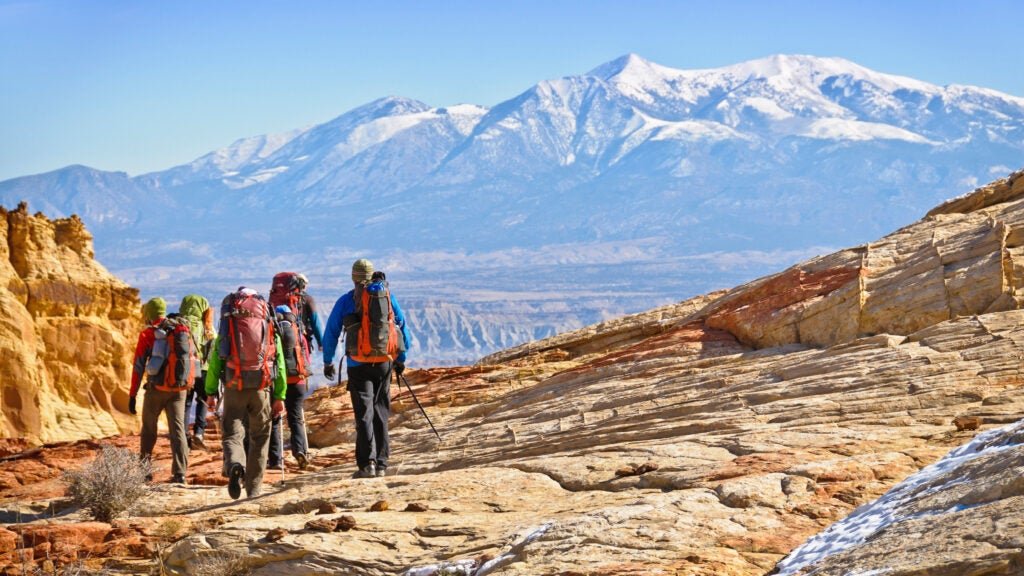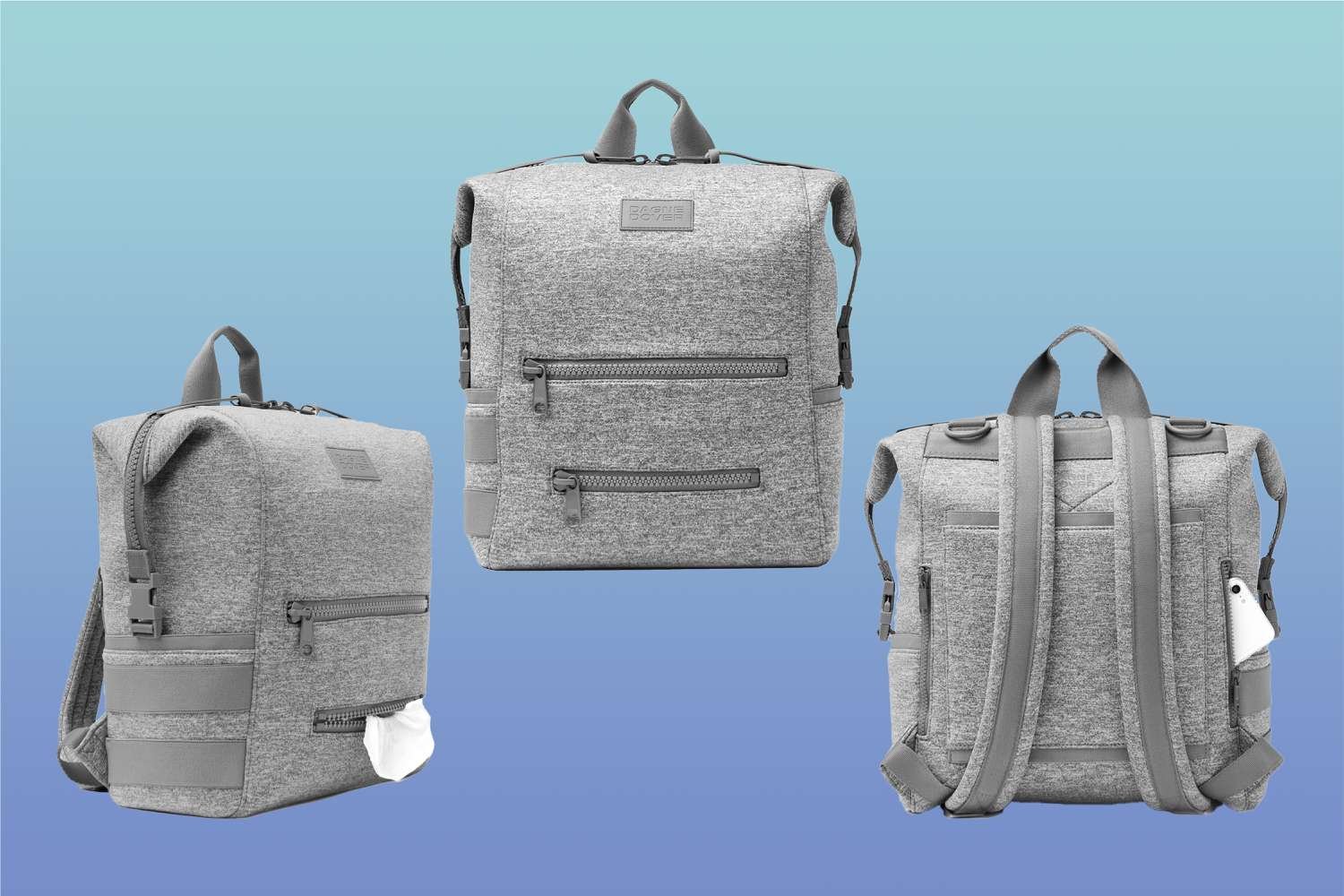Heading out the door? Learn this text on the brand new Exterior+ app obtainable now on iOS units for members! Obtain the app.
Taking these first couple of steps into the wild may be intimidating. So can attempting to parse all the recommendation on the market: Everybody crunchy previous hiker has their very own, sometimes contradictory, methods of doing issues. We right here at Backpacker wish to make your life a bit simpler, so we’ve pulled collectively these important items of recommendation that we wish to move down. These aren’t the fundamentals—you gained’t discover a step-by-step on tips on how to arrange your tent right here. As a substitute, they’re the little hacks, tips, and hard-won information that can make your journey go that further bit extra easily. —The Editors
Hike Proper
Save your self lots of bother later with a bit little bit of effort now by embracing these strategies
Deal with your ft
Get boots that match: comfortable within the heel, however with sufficient room within the forefoot to permit for inevitable swelling on lengthy days with a pack. Enable loads of time to stroll round within the retailer (you weren’t going to purchase new boots with out attempting them on, had been you?) Really feel for stress factors and blister-causing heel slip. Most shops have an incline board; test for motion together with your foot pointing each up- and downhill.
A good higher thought in heat climate: use path runners or different light-weight, breathable sneakers. They’ll scale back warmth buildup, and warmth accelerates blisters. The Altra Lone Peak collection is a tried-and-tested fave.
Preserve your socks dry (grow to be a brand new pair if wanted); air your ft at relaxation breaks.
Deal with scorching spots proactively with a nonstretch sports activities tape like Leukotape (plain previous duct tape additionally works).
Reduce your toenails quick.
Use a lubricant like Physique Glide to cut back friction in downside areas.
Lace boots with precision consolation: Tie an overhand loop on the ankle to create a locking twist, and repeat at every eyelet (see beneath). Modify rigidity the place wanted, and even skip an eyelet altogether.
Obtained a blister anyway? Use blister cushions till you have got an opportunity to wash and drain it.
A bit of rain doesn’t must spoil your journey. (Photograph: RyanJLane / E+ through Getty)
Keep dry in a storm
Begin with a shell that extends beneath your hips, so there’s no hole between jacket and pants the place rain can sneak in. Cinch the hem snugly.
Roll up the cuffs of your baselayer in order that they don’t wick water up your sleeves, and cinch your jacket’s cuffs. Keep away from elevating your arms (giving water simpler entry to your cuffs) and shorten your trekking poles so your wrists are angled down.
Preserve your hood comfortable, and put on a water-resistant/breathable billed cap (like Sealskinz Waterproof All Climate Cap, $30) beneath to boost face safety within the worst climate.
Put on gaiters together with your rain pants whenever you’re strolling via leg-soaking, moist brush.
Don’t sweat. Even essentially the most breathable raingear may be overwhelmed from the within in case your exertion is simply too nice for the temps. Getting steamy? Open each pit zip and vent, shed layers, and, if wanted, merely decelerate. In heat, humid situations, take into account skipping the jacket and use a light-weight umbrella.
Preserve your stuff dry. Use a pack liner or dry luggage, and don’t expose dry gear to the rain throughout breaks.
Navigate with out a compass or GPS
You must actually convey the appropriate gear. However these nifty strategies can work as a last-ditch effort, or as a celebration trick
Stars Discover the Huge Dipper. Prolong an imaginary line via the 2 stars on the finish of the outer cup to a medium-bright star (about 5 instances the “distance” between the 2 Huge Dipper stars). That is the North Star.
Watch Maintain an analog watch degree, with the hour hand pointing to the solar. South is midway between the hour hand and the 12 (Observe: This trick solely works within the Northern Hemisphere, and in addition assumes your watch is ready to the appropriate time).
Shadow stick Stand a 3-foot stick vertically within the floor and mark the tip of its shadow with a rock. Wait a minimum of quarter-hour, then mark the shadow once more. The connecting line roughly signifies east-west (south is on the solar aspect of the road).
Stroll proper
Sure, there’s a incorrect strategy to put one foot in entrance of the opposite. Look ahead to these pitfalls
Over-striding Taking large steps can result in overuse accidents like strained quads and hip bursitis. Shorter steps reduce pounding and muscle exertion, making your stride extra vitality environment friendly though you are taking extra steps general.
Forefoot putting That is OK for working, not strolling. Pounding on the forefoot (reasonably than steadily rocking the foot from again to entrance) could cause foot and leg issues, together with the very painful metatarsalgia.
Shuffling You wish to push off together with your toes with every new step. Omitting this ultimate toe-off part (by shuffling or dragging your ft) jars joints from head to toe.
No danglies
Keep away from lashing heavy gadgets to the skin of your pack. They’ll throw you off steadiness and stress pack seams. Plus, they simply look foolish.
Hike Larger
The mountains require an entire completely different set of strategies than the lowlands. Preserve the following pointers in thoughts whenever you enterprise into the hills.
Acclimate properly
Touring from low to excessive elevation? Construct in an additional day or two and permit your physique to regulate, reasonable your effort the primary couple days, and attempt to keep away from driving on to trailheads above 10,000 ft (plan a dayhike at a decrease elevation).
Keep hydrated (air is dry up excessive); keep away from alcohol.
Hike excessive, sleep low. Camp every day beneath the best elevation you’ve reached.
Keep away from ascending greater than 2,000 ft whole per day.
If signs of altitude illness develop (persistent headache, lack of urge for food, fatigue, lack of coordination), cease ascending. Go down in the event that they don’t enhance inside 24 hours.
(Photograph: Cavan Photographs through Getty)
Descend safely
Made it to the highest? Congratulations. Now don’t break your journey on the way in which down.
Preserve your knees barely bent as your switch weight to the downhill leg, absorbing influence together with your muscle mass as an alternative of your joints.
Align your foot, knee, and hip on large downward steps. This helps stop rolling an ankle and takes some pressure off your muscle mass.
Use your trekking poles like crutches when stepping off big ledges. Plant them in entrance of you, on both aspect of the place you wish to land, and decrease your self in a managed approach utilizing the poles for help.
Glissading? Take away your crampons (in the event you tumble with spikes on, they will lower you, and catching a degree can spin you uncontrolled).
Use crampons accurately
These spikes are your ticket to soundly traversing steep snow and ice. However there’s a studying curve: Flex your ankle with every step, so your foot is flat in opposition to the slope, bringing all factors involved with the bottom. Don’t transfer one foot till the opposite one (and your ice axe) are safe.
Be taught to self-belay
Strolling unroped on steep snow? Use your ice axe to forestall a slide. With ft safe, plant the spike and shaft (adze ahead) a minimum of 6 inches deep. Preserve your uphill hand on the axe head as you step. Repeat. If you happen to slip, preserve one hand on the axe head and seize the shaft (low) with the opposite. Your weight ought to pull in opposition to the buried shaft.
Layer sensible
On alpine begins, it’s tempting to bundle up in opposition to the chilliness. Begin chilly; you’ll heat up quick going uphill and gained’t overheat.
Hike Comfier
Efficiency isn’t the whole lot. Keep cozy with these hard-won suggestions.
Pitch the right camp
Select a website 200 ft from lakes and streams. Camp at established websites and on sturdy surfaces each time doable.
Hold your bear bag or stash your canister a minimum of 200 ft downwind from camp.
In grizzly nation, prepare dinner 200 ft or extra downwind out of your tent.
In calm situations, orient your tent door to the east for early solar.
Lookup to ensure no useless bushes/branches threaten to fall in your website (particularly in beetle-damaged forests within the West).
Discover a flat rock, ideally with a windbreak, in your kitchen.
Defend your self from wind
Spend further time looking for a sheltered website, like in a low-lying forest. Above treeline, search safety on the lee aspect of a rock outcropping or ridgeline.
Orient your tent so the smallest aspect is going through the wind. If it’s not raining, wait till the winds die down (typically at sundown) to pitch your tent. You’ll scale back the chance of injury from an enormous gust.
Man out your tent securely. Right here’s how: Tie small overhand loops at every finish of a nylon twine (4 to eight ft). Pull one finish via a man loop, then move the opposite finish via the loop within the twine to lock it. Anchor the opposite finish tautly to a stake.
Eat higher
5 methods to enhance the menu:
Pack a couple of light-weight, recent add-ins to spice up the style of any dehydrated meal. Concepts: cilantro, jalapeno, parsley, basil.
Serve an appetizer. Soup is a no brainer in cool climate.
Improve any lunch wrap with an avocado. Pack it in your pot to forestall squishing.
Add butter. Easy!
Use further water in dehydrated meals. There’s nothing worse than not-quite-rehydrated stroganoff.
Flame management
If you happen to should prepare dinner in your vestibule throughout a storm, prime a liquid-fuel range outdoors after which pull it in.
Initially printed in 2014; final revised and up to date April 2023


